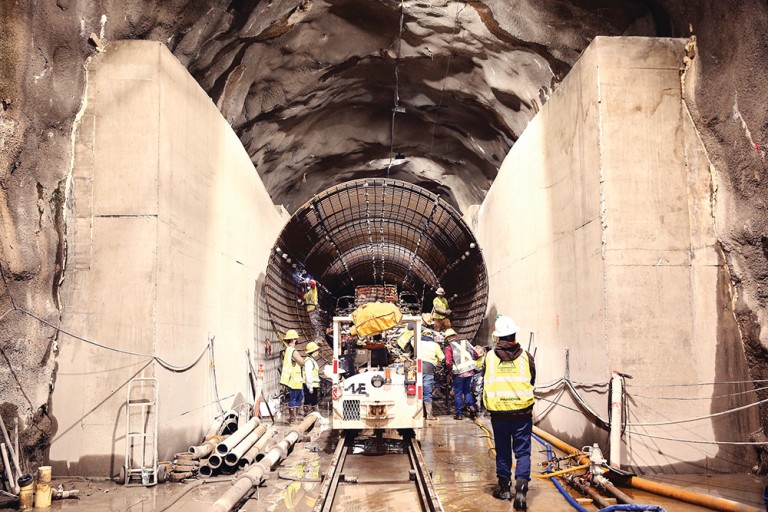By Forum Staff
Mayor Eric Adams and City Department of Environmental Protection Commissioner Rohit Aggarwala on Monday launched the final phase of DEP’s largest-ever infrastructure repair initiative — the $2 billion Delaware Aqueduct Repair Project.
The project will prevent 35 million gallons of drinking water from leaking into the ground in upstate New York every day, according to the Adams administration.
Over the past 11 years, the City has been constructing a 2.5-mile bypass tunnel around a large leak near Newburgh and preparing to fix another leak in Ulster County; in this final phase, the City will connect the ends of that tunnel to the main aqueduct, seal off the leaking portion near Newburgh, and repair the leak under Ulster County.
“New York City’s tap water is the envy of the world — it’s why we have the best pizza and bagels in the country,” Adams said. “Today, we’re kicking off the final phase of an 11-year project to secure the future of our water supply and make sure that New Yorkers can continue to enjoy the billion gallons of drinking water we use every day. In order to fix the 35-million gallon per day leaks in the Delaware Aqueduct, we’ve built a 2.5-mile bypass tunnel, and over the course of the next several months, we’re going to connect that bypass tunnel to the main aqueduct as part of the largest repair project in DEP’s history. Some New Yorkers’ water might taste or smell slightly different for a few months while we complete this project as their water comes from a different reservoir, but New Yorkers should know it will still be perfectly safe to drink.”
DEP manages New York City’s water supply, providing approximately 1.1 billion gallons of high-quality drinking water each day to nearly 10 million residents, including 8.3 million in New York City. The water is delivered from a watershed that extends more than 125 miles from the city, comprising 19 reservoirs and three controlled lakes. Approximately 7,000 miles of water mains, tunnels, and aqueducts bring water to homes and businesses throughout the five boroughs.
Throughout the repairs, DEP will rely upon the redundancy of its 19-reservoir system to continue to deliver clean, safe water at the levels upon which its customers currently depend. Specifically, there will be increased amounts of drinking water coming from the Croton Watershed, a group of 12 reservoirs and three controlled lakes in Westchester and Putnam counties, to feed the Big Apple’s water supply. Thanks to DEP’s many redundant sources of water, and its interconnected set of aqueducts and water tunnels, there will be no impact on the amount of water being supplied to the city.
DEP also completed significant capital projects to prepare for this phase, including increasing the Catskill Aqueduct’s capacity, upgrading reservoirs across the watershed, and more.
“The momentous work that has gone into this project will ensure the continuing supply of high-quality water to New Yorkers for decades,” said Howard Beach resident and former DEP Commissioner Vincent Sapienza (2017-2022). “Our water supply system is an engineering feat that made the city what is it today, and many thanks are due to Commissioner Aggarwala and the DEP team for progressing this mega public project to its final phase.”

